How much does food cost in Boquete, Panama?
Linda Jensen
Numerous markets dot the town of Boquete. There are a few small grocery stores and most carry some name brand American, Danish or German products. It is safe to use and try the cheaper Panamanian products. 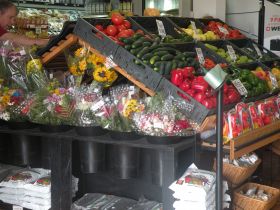

We buy a case of the small cartons of milk. You do not refrigerate until after opening. The case costs a little less than $20 USD. There are places that sell items in bulk.
The meat in Boquete is of a bit different cuts than we are used to...
Numerous markets dot the town of Boquete. There are a few small grocery stores and most carry some name brand American, Danish or German products. It is safe to use and try the cheaper Panamanian products. 

We buy a case of the small cartons of milk. You do not refrigerate until after opening. The case costs a little less than $20 USD. There are places that sell items in bulk.
The meat in Boquete is of a bit different cuts than we are used to seeing in American stores. But they are just as good. It was suggested by a Canadian friend that to make the ground beef taste better ( it is very lean) chop a couple slices of bacon very small and mix well. He said it is great for hamburgers or other ground beef recipes.
Fresh fruit and vegetables are usually very affordable, and you can get almost anything at the market across the street from Romero's grocery store (pictured above). If you spend $10 you'll eat well for a week.
It is affordable to purchase the basics and it doesn't cost over $200. When you want specific items such as lox or bagels it usually costs bit more. However with the overall savings on rent, utilities and cell phone service making a seemingly extravagant purchase now and then is not going to wreck the budget. 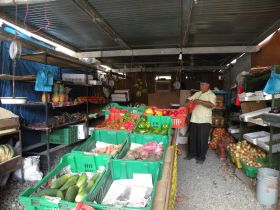

Posted May 30, 2013
Paul McBride - Inside Panama Real Estate
The key to keeping your food costs low is to buy things grown or produced in Panama. Anything in a box or a can (particularly if it's imported) is going to cost as much or more than you'd pay in the US or Canada. Fresh fruits and vegetables are a real bargain and my wife and I spend about $9 to $10 every two weeks on fresh produce. Chicken and pork (both produced in Panama) are about 30% less expensive than in the US. Although cattle are raised throughout...
The key to keeping your food costs low is to buy things grown or produced in Panama. Anything in a box or a can (particularly if it's imported) is going to cost as much or more than you'd pay in the US or Canada. Fresh fruits and vegetables are a real bargain and my wife and I spend about $9 to $10 every two weeks on fresh produce. Chicken and pork (both produced in Panama) are about 30% less expensive than in the US. Although cattle are raised throughout Panama, many foreigners find the meat to be a bit tough. However, most cattle are grass fed so the fat content is low and the meat is actually healthier than grain fed cattle.
Fresh fish is an incredible bargain. I recently purchased 2 lbs of freshly caught yellow fin tuna (sashimi grade) for $9. On a recent trip to the US, I saw yellow fin tuna (frozen, not fresh) in a major supermarket chain for $28.99/lb!
So, eating in Panama is not only much less expensive than eating in the US but is actually healthier for you if you maintain a diet based on fruits, vegetables, fresh fish and poultry.
Posted June 26, 2013
Philip McGuigan - Chiriqui United, an Association of the leading humanitarian organizations in the Chiriqui Province of Panama
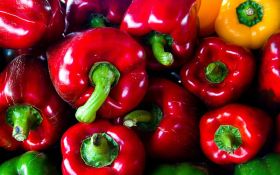 Produce is generally cheap here in Panama compared to the US because most of the produce we buy in Panama is grown here. Most of the fruits and vegetables that I eat, except for the gala apples that I buy at PriceMart, are grown here.
Produce is generally cheap here in Panama compared to the US because most of the produce we buy in Panama is grown here. Most of the fruits and vegetables that I eat, except for the gala apples that I buy at PriceMart, are grown here. Normally, I buy my fruits and vegetables at the farmers' market or the municipal market, but it was torn down and it is now in the process of being rebuilt for a few months. When its ready, I will go back to...
 Produce is generally cheap here in Panama compared to the US because most of the produce we buy in Panama is grown here. Most of the fruits and vegetables that I eat, except for the gala apples that I buy at PriceMart, are grown here.
Produce is generally cheap here in Panama compared to the US because most of the produce we buy in Panama is grown here. Most of the fruits and vegetables that I eat, except for the gala apples that I buy at PriceMart, are grown here. Normally, I buy my fruits and vegetables at the farmers' market or the municipal market, but it was torn down and it is now in the process of being rebuilt for a few months. When its ready, I will go back to the two vendors where I bought everything because is it a pleasure to deal with the folks who grow the produce. The way it worked from the day I came here, up to the time when they tore down the building to make it much larger to accommodate more, is basically, the farmers have little stalls or booths, which are probably around 4 feet by 10 feet, depending on their location within the building.
You can also buy meat at the farmers' market. The meat gets cheaper as the day goes on because they do not have any refrigerators. You will actually see the carcass hanging from a hook and they custom butcher it for you. The vendors know that they have to sell what they have towards the end of the day because of the refrigeration issues, and they do a good job at doing that.
The price of the vegetables here in Panama is substantially less expensive than in the US and the meat is somewhat less expensive. I am a former 91R20, which means that I was trained as a food inspector by the United States Army, so buying meat that is carved out of a carcass is something I would not want to do, and as a result, I do not buy the meat at the farmers market. I only buy the fresh produce.
One of the nice things about going to Habla Ya (Spanish school) here in Boquete is that Lorena, our teacher, took us out to go shopping. She said, “OK, let’s get up and go shopping. The first thing you need to know is how to go shopping.” So we first went to Romero’s, which is a big supermarket chain in Panama. We toured the aisles, and she taught us the words we need to say to buy the things we want to buy. Then she took us to the farmers' market and introduced us to the two vendors, Mediana and Jorge, who are the vendors that I continue to deal with to this day.
When you go to Romero’s you will find a wide selection of goods because there is a significant expat community here in Boquete so both Romero’s and El Rey (which has the same parent company as Romero’s) has items that expats have asked them to bring in. The Super Baru, which is another supermarket here, has what we lovingly call “the gringo corner”, which has all the items that you cannot find anywhere else.
The farmers' market is the least expensive; it is about 10% to 20% less expensive than the stores. The produce in the farmers market are not all washed and polished. When you buy a tomato at Romero’s it is bright, shiny and washed, whereas if you buy from the farmers market, you need to go home and still wash the tomato. The supermarkets here in Panama are around 30% less expensive than the supermarkets in the US. But you will not get a big bargain on things like Campbell soup because they basically sell unit price across the world. Where you will get your biggest bargains are on things that are produced in Panama.
Posted December 18, 2014
Mike Vuytowecz - Inside Panama Real Estate
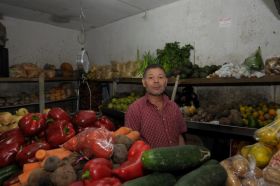 Produce and fruits are cheap in Boquete. I buy enough per week for a family of four for around US $10 (all prices in USD, the currency used in Panama). Lean, local ground beef is around $3.50/lb. Chicken is $1.50 to $2.00 per pound. Fresh fish ranges depending on species, but in general, a meal for four adults will cost under $10 for good-sized portions. 15 eggs cost $2.30. Milk is around $3.00. Additional items that...
Produce and fruits are cheap in Boquete. I buy enough per week for a family of four for around US $10 (all prices in USD, the currency used in Panama). Lean, local ground beef is around $3.50/lb. Chicken is $1.50 to $2.00 per pound. Fresh fish ranges depending on species, but in general, a meal for four adults will cost under $10 for good-sized portions. 15 eggs cost $2.30. Milk is around $3.00. Additional items that... Produce and fruits are cheap in Boquete. I buy enough per week for a family of four for around US $10 (all prices in USD, the currency used in Panama). Lean, local ground beef is around $3.50/lb. Chicken is $1.50 to $2.00 per pound. Fresh fish ranges depending on species, but in general, a meal for four adults will cost under $10 for good-sized portions. 15 eggs cost $2.30. Milk is around $3.00. Additional items that are found in any supermarket are comparable to the US or Canada in price. A typical lunch at a Panamanian restaurant, which consists of chicken, beef, or fish, with sides of rice and beans, salad, and sweet plantains costs between $2.50 and $4.00. I love to cook, but eating out is an excellent value!
Produce and fruits are cheap in Boquete. I buy enough per week for a family of four for around US $10 (all prices in USD, the currency used in Panama). Lean, local ground beef is around $3.50/lb. Chicken is $1.50 to $2.00 per pound. Fresh fish ranges depending on species, but in general, a meal for four adults will cost under $10 for good-sized portions. 15 eggs cost $2.30. Milk is around $3.00. Additional items that are found in any supermarket are comparable to the US or Canada in price. A typical lunch at a Panamanian restaurant, which consists of chicken, beef, or fish, with sides of rice and beans, salad, and sweet plantains costs between $2.50 and $4.00. I love to cook, but eating out is an excellent value! Posted December 25, 2014
Georgina Chanapi - Lucero Homes Golf & Country Club
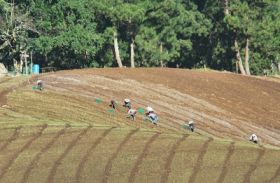 Food in Boquete is cheaper compared with other areas of Panama because we have agricultural areas here. People produce their own vegetables here in Boquete. It is cheap if you have your own garden, so you don’t have to buy in the supermarket. When you plant our own, you can have, for example, mango trees, corn, and all the vegetables that you want.
Food in Boquete is cheaper compared with other areas of Panama because we have agricultural areas here. People produce their own vegetables here in Boquete. It is cheap if you have your own garden, so you don’t have to buy in the supermarket. When you plant our own, you can have, for example, mango trees, corn, and all the vegetables that you want. I have recently...
 Food in Boquete is cheaper compared with other areas of Panama because we have agricultural areas here. People produce their own vegetables here in Boquete. It is cheap if you have your own garden, so you don’t have to buy in the supermarket. When you plant our own, you can have, for example, mango trees, corn, and all the vegetables that you want.
Food in Boquete is cheaper compared with other areas of Panama because we have agricultural areas here. People produce their own vegetables here in Boquete. It is cheap if you have your own garden, so you don’t have to buy in the supermarket. When you plant our own, you can have, for example, mango trees, corn, and all the vegetables that you want. I have recently planted corn because it is rainy season, which is the best time to plant some corn. Summer is not a good time for planting because there is not much rain, and you have to water the plants everyday. It is best to wait for the rainy season here in Boquete.
The province of Chiriquí (of which Boquete is a part) is the main producer of rice in Panama. Here in Panama, many people eat rice, just like Chinese people do. Vegetables are cheaper compared to other areas because this is where we produce the vegetables and we send them to Panama City. You also have the opportunity buy organic vegetables here in Boquete, which can be hydroponic (grown in water). They don’t put chemicals on organic vegetables.
Boquete, Volcan and specifically in Alto Quiel (north of Boquete, up even higher in the mountains), they produce potatoes, onions, and carrots. Alto Quiel is the colder area here in Boquete and is where they have the hydroponic ponds.
Most Panamanians here in Boquete have their own gardens. I don’t know if expats have gardens, but most Panamanians do, which means that Panamanians have their own vegetables and potatoes, so they don’t have to buy them at the market. Chiriquí also produces meat. We have cows that produce the meat, all locally done.
We don’t usually buy vegetables from the traditional, North American style supermarket, even if we know that the supermarket is cheap, too. There is a place here near the park in Boquete called El Mercadito and there are vegetable mercaditos (small markets) where you can buy fresh vegetables that are inexpensive. Even though Boquete has supermarkets like Romero or Deli Baru, they don’t sell vegetables because they know that it’s cheaper if you go to the mercaditos and buy vegetables there. Even the expats go to the mercadito to buy vegetables. Supermarkets don’t bother selling the vegetables because they know no one will buy. They have fruits like bananas but they don’t sell vegetables.
(Land under cultivation in Chiriqui Province, pictured.)
Posted May 27, 2015
Wee-Yiong Fung - Prestige Panama Realty
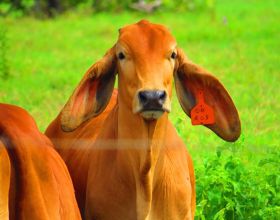 The cost food in Boquete can be a little bit cheaper or more expensive, depending on the type of food and where you buy it. For example, in the highlands of Chiriquí where Boquete is located and where fruits and vegetables are grown, those products are a lot cheaper compared to David or Panama City. If you are going to buy meat, seafood, and canned goods that are not locally produced in the Boquete area, it will be a bit expensive compared to David and Panama City.
The cost food in Boquete can be a little bit cheaper or more expensive, depending on the type of food and where you buy it. For example, in the highlands of Chiriquí where Boquete is located and where fruits and vegetables are grown, those products are a lot cheaper compared to David or Panama City. If you are going to buy meat, seafood, and canned goods that are not locally produced in the Boquete area, it will be a bit expensive compared to David and Panama City. ...
 The cost food in Boquete can be a little bit cheaper or more expensive, depending on the type of food and where you buy it. For example, in the highlands of Chiriquí where Boquete is located and where fruits and vegetables are grown, those products are a lot cheaper compared to David or Panama City. If you are going to buy meat, seafood, and canned goods that are not locally produced in the Boquete area, it will be a bit expensive compared to David and Panama City.
The cost food in Boquete can be a little bit cheaper or more expensive, depending on the type of food and where you buy it. For example, in the highlands of Chiriquí where Boquete is located and where fruits and vegetables are grown, those products are a lot cheaper compared to David or Panama City. If you are going to buy meat, seafood, and canned goods that are not locally produced in the Boquete area, it will be a bit expensive compared to David and Panama City. If we compare the cost of food in the US and in Boquete, the cost for food in Boquete may be 50% less than what the people pay in the US. For example, fruits and vegetables cost less because these items are locally grown in Boquete. Meat is a little expensive in the US because of the weather and because they are grain-fed, as opposed to grass-fed cattle in Boquete, which increases the cost of meat in the US.
(Pictured: Grain fed cattle in Chiriqui, Panama.)
Posted June 25, 2015
Ricord (Ric) Winstead, MD - Retirement Services International
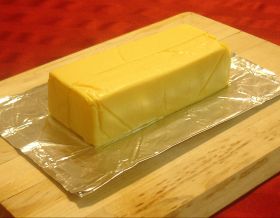 In Boquete, the cost food is pretty much based on your requirements. You can get expensive, imported food or you can get local food and lots of vegetables, which are cheap. The cost of food really depends on your ability and wants in terms of being happy with what is available locally. The main things that are expensive are the US-brand products.
In Boquete, the cost food is pretty much based on your requirements. You can get expensive, imported food or you can get local food and lots of vegetables, which are cheap. The cost of food really depends on your ability and wants in terms of being happy with what is available locally. The main things that are expensive are the US-brand products. The non-imported items, which are plentiful and really reasonably priced are, for example, grass-fed beef, chicken,...
 In Boquete, the cost food is pretty much based on your requirements. You can get expensive, imported food or you can get local food and lots of vegetables, which are cheap. The cost of food really depends on your ability and wants in terms of being happy with what is available locally. The main things that are expensive are the US-brand products.
In Boquete, the cost food is pretty much based on your requirements. You can get expensive, imported food or you can get local food and lots of vegetables, which are cheap. The cost of food really depends on your ability and wants in terms of being happy with what is available locally. The main things that are expensive are the US-brand products. The non-imported items, which are plentiful and really reasonably priced are, for example, grass-fed beef, chicken, vegetables, and fruits. Fresh vegetables and fruits are plentiful and there is a lot of variety, which is really great. Those kinds of products are very basic and very cheap in Boquete as they are all over the country. Seafood comes a long way so it is not as cheap.
Once you look for, for example, a special brand of potato chips or cheese or unusual canned goods such as Mexican chilies, (you can’t find a lot of Mexican food in Panama because there are not a lot of Mexicans here) then it gets more expensive. The harder you have to look for rare items, the more you are going to pay for them.
An American would not be giving up a lot of things in order to get food that they want in Boquete unless you want to have a specific brand of cereal or a certain brand of cheese. Panamanian cheese, which is the regular country cheese is white cheese that is like peasant cheese in a way. Panamanians tend to have a lot of Velveeta type of cheese so if you want to have a nice cheddar cheese, you have to look. There are cheddars that you could find; you just have to look for them. There are national varieties of cheddar cheese or you could a US $3 a pound or $2 a brick or you could get a manchego, which is Spanish cheese, for $9 for the same size. The cost of food in Boquete depends on what you need and what you choose and how much you need to eat it.
The expats who I talked to rapidly made the transition. They have figured out where to get the things they want, they had to give up some of the things that they are used to, and life is good. Overall, the cost of food in Panama is about 25% cheaper compared to the food cost in Seattle, Washington.
(Pictured: Velveeta cheese on a cutting board.)
Posted July 19, 2015


